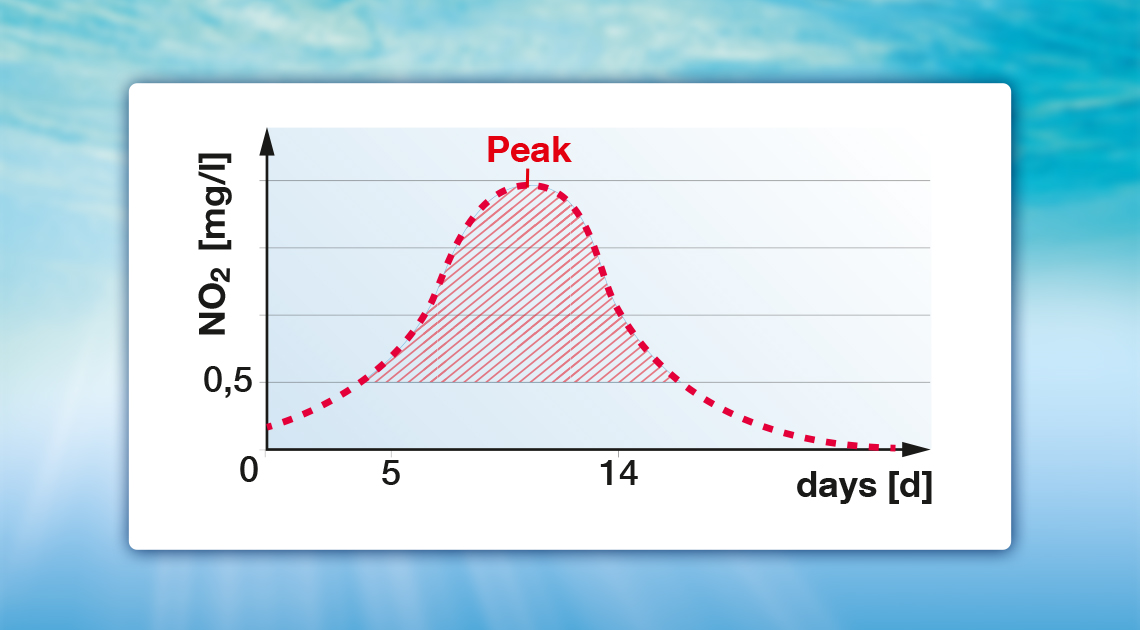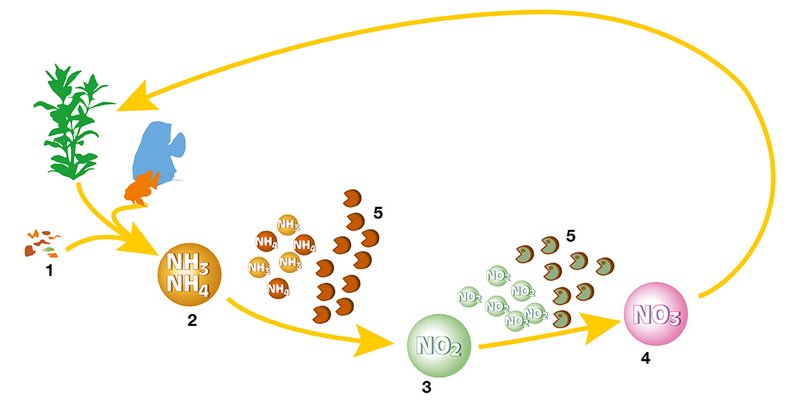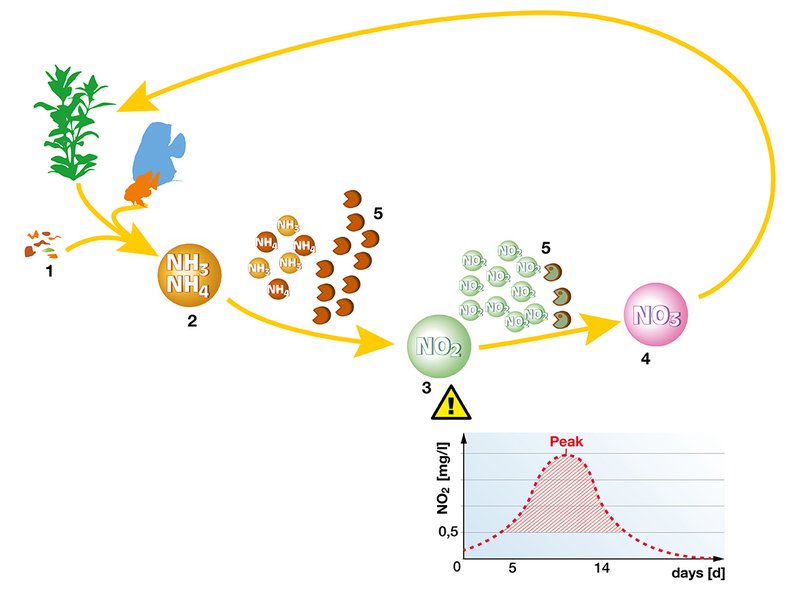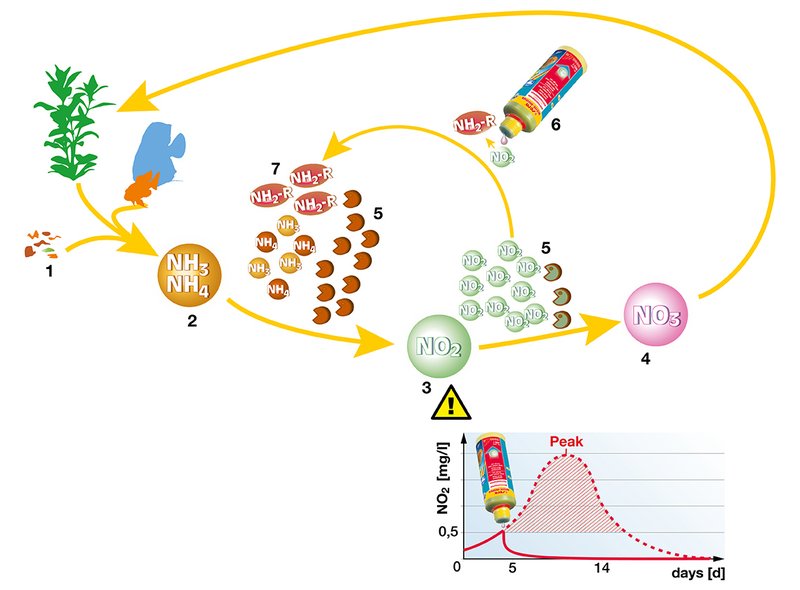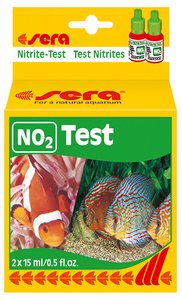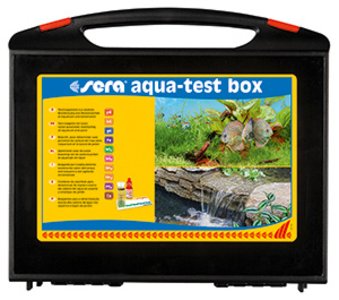What you should know about the new tank syndrome
The “new tank syndrome” is a rather well known and often also dreaded occurrence in the aquarium hobby. Especially beginners of the beautiful hobby are often unsure when talking about it. There is some advice on the Internet which in part contradict each other. What does new tank syndrome mean, when does the new tank syndrome occur and what can be done against it? We want to clarify things with this article.
1. What is the new tank syndrome?
The expression new tank syndrome (“nitrite peak”) is composed from the English words “nitrite” and “peak”. The new tank syndrome means quickly rising nitrite levels in water leading to a very high level. Afterwards, the nitrite concentration sinks again. Nitrite is toxic for fish and can even be fatal in higher amounts. The water parameters in the aquarium should therefore be checked regularly and altered if necessary. Measures must be taken by aquarists even at a concentration of 0.5 mg/l nitrite, because at the latest at 1.0 mg/l, nitrite is harmful for the aquarium inhabitants.
| NO2 | Evaluation |
|---|---|
| 0.0 mg/l | good |
| > 0–0.5 mg/l | action required |
| 0.5 mg/l | critical |
| 1.0 mg/l | harmful |
| 2.0 mg/l | dangerous |
| 5.0 mg/l | toxic |
2. How does the new tank syndrome form?
It is important to know the basic principle of the nitrogen cycle for understanding how the new tank syndrome occurs. A functioning nitrogen cycle is the basis for a properly running aquarium.
The inorganic nitrogen compound ammonium (NH4) is being formed from plant and food leftovers, fish waste and other organic substances in an aquarium. This substance in itself is not a threat for aquarium inhabitants. However, if the pH value in the water is above 7, toxic ammonia (NH3) is being formed. In a biologically well established aquarium, the so-called Nitrosomonas bacteria, among others, ensure both ammonium and ammonia are converted into nitrite (NO2). These bacteria form rather quickly in a newly set-up aquarium, which is why the breakdown of ammonium and ammonia works quite well also in a new aquarium. In the following step, the formed nitrite is converted into nitrate (NO3) by Nitrobacter bacteria, among others, and then serves as a plant nutrient. The bacteria that break down nitrite take rather long to form in a new aquarium. At this time, the new tank syndrome can therefore arise: too few filter bacteria have formed or are present, which could convert arising nitrite into nitrate and thus render it harmless. The substance enriches and is harmful for the animals kept in the aquarium. Only after some time, enough nitrite converting filter bacteria have formed, allowing nitrite immediately being converted into nitrate from now on. The new tank syndrome is thus over, and the nitrite amount goes down, so the nitrogen cycle can run regularly now.
There are further situations besides the start phase of a new aquarium during which the new tank syndrome may arise:
- during the start phase of a new aquarium, since there are not yet enough bacteria for converting nitrite into nitrate (usually between the 5th and 15th day)
- after a disease treatment, since the treatments often harm the bacteria
- after a filter change or too thorough filter cleaning, since this removes a large amount of the useful bacteria
3. How do I recognize the new tank syndrome?
The nitrite level should always be monitored (see sera NO2-Test) especially during the start phase, as to find out whether the nitrite level in the water gets higher. The same apples for the time after a filter change, a bigger cleaning measure or a disease treatment. This allows for a quick reaction to elevated nitrate levels. The duration of the new tank syndrome differs between aquariums. The sera NO2-Test again allows checking whether the nitrite level has gone down and the new tank syndrome thus is over.
In a biologically already well established aquarium, even small changes can lead to rising nitrite levels (e.g. overfeeding). Symptoms of an acute nitrite intoxication of the fish are fish gasping for air, staying at the water surface for a longer time, breathing heavily and moving their gills vigorously.
4. What to do in case of the new tank syndrome?
If the new tank syndrome has already occurred, measures for protect the aquarium inhabitants as good as possible must be taken immediately. The newest sera research result is perfectly suited for immediate help: sera Nitrite-minus. It removes up to 1.5 mg/l nitrite per dosage and can be dosed up to 5-fold. Nitrite-minus converts the nitrite present in aquarium water into organic amines which are being utilized by the filter bacteria. Re-dissolution of the nitrite is thus not possible. sera Nitrite-minus is very well tolerated by ornamental fish, invertebrates and plants.
| NO2 | Evaluation | Measures |
| 0.0 mg/l | good | - |
| > 0–0.5 mg/l | action required | dose sera bio nitrivec |
| 0.5 mg/l | critical | possibly dose sera Nitrite-minus (1-fold dosage) |
| 1.0 mg/l | harmful | dose sera Nitrite-minus (1- fold dosage) |
| 2.0 mg/l | dangerous | dose sera Nitrite-minus (possibly 2- fold dosage) |
| 5.0 mg/l | toxic | dose sera Nitrite-minus (possibly 4- fold dosage) |
5. How can I prevent the new tank syndrome?
If a coming new tank syndrome is foreseeable, sera Nitrite-minus can be used preventively – for instance, every other day during the start phase between the 5th and 15th day. Monitoring the nitrite level regularly tells whether the nitrite peak is over. Monitoring the water parameters is generally advisable for detecting possibly dangerous developments in time and being able to counteract them. Even small changes (higher fish density, overfeeding, strong plant growth) can lead to the bacteria being overburdened and thus not breaking town arising nitrite quickly enough so the nitrite level in the water goes up. The sera Quick Test is suitable for quickly checking the water parameters. Should this reveal the values are not alright, the precise deviations can be checked by means of the various liquid tests by sera.
